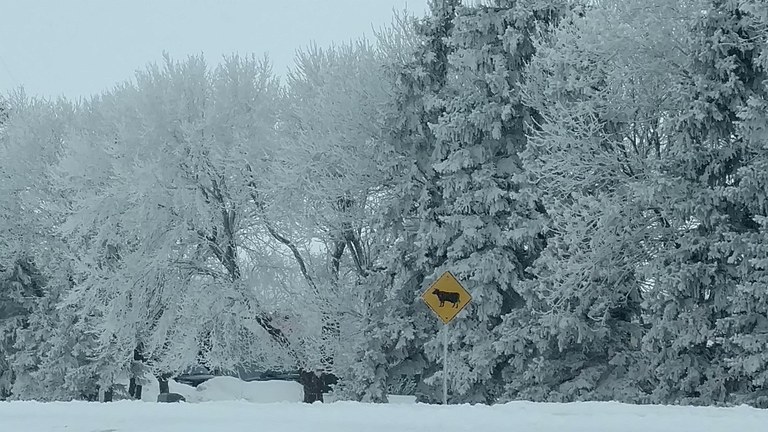North Dakota ‘Extreme’ Cold Weather Affects Cows and Calves
This winter has lingered on with extreme cold weather. According to the NDAWN weather station at Carrington, we had 65 days straight where the outdoor temperature did not reach 32 degrees F. For 42 of those days, the wind chill was -20 degrees F or colder. For eight of those days, the wind chill was -40 degrees F or lower. You can easily search NDAWN for many weather statistics including minimum windchills here: https://ndawn.ndsu.nodak.edu/.
This extreme cold weather has many implications for a cow herd. Producers are using up hay reserves faster than anticipated and are now searching for feeds to reduce hay needs while stretching reserves until grass turnout. Because of the drought conditions over the last two years, grass turn out time may be farther away than normal. For more information about grazing readiness check out the NDSU Extension Natural Resource Management website: https://www.ag.ndsu.edu/naturalresources/gearing-up-for-grazing.
Cows that were challenged by the winter weather may have weak calves that need extra help at calving. Cold weather stress is especially harmful to newborn calves. Cows that are thin in body condition will have calving problems including extended delivery and reduced colostrum supply. Thin cows also may have a longer interval to rebreeding. Bulls may have developed scrotal frostbite and risk becoming temporarily or permanently sterile.
These issues were addressed in a webinar provided by the NDSU Extension livestock specialists. The webinar – Cattle Management in Cold Weather – was recorded and can be watched by clicking on the following link https://www.ag.ndsu.edu/livestockextension/cattle-management-in-cold-weather. The webinar discussed ways to deal with concerns about forage supplies, animal stress and condition, calving challenges and other issues that have come out of the extended period of extreme temperatures and wind chills.
Presenters include Extension livestock specialists Karl Hoppe of the Carrington Research Extension Center (REC); Janna Block, Hettinger REC; Lisa Pederson, Central Grasslands REC; John Dhuyvetter, North Central REC; Extension veterinarian Gerald Stokka; and Extension Livestock environmental stewardship specialist Miranda Meehan.
If you are looking for sources, phone numbers, and prices of co-products, go to: https://www.ag.ndsu.edu/CarringtonREC/livestock/livestock-extension and click on ‘Co-product Feeds in North Dakota – February 2019’.

Heavy winter frost captured by Karl at the CREC livestock unit.
Karl Hoppe
Karl.Hoppe@ndsu.edu
Extension Livestock Specialist


